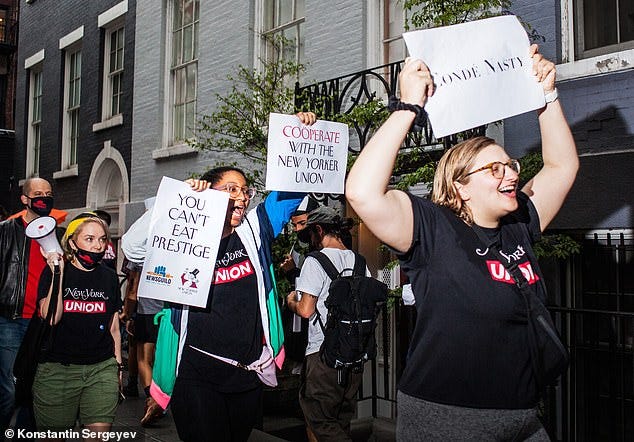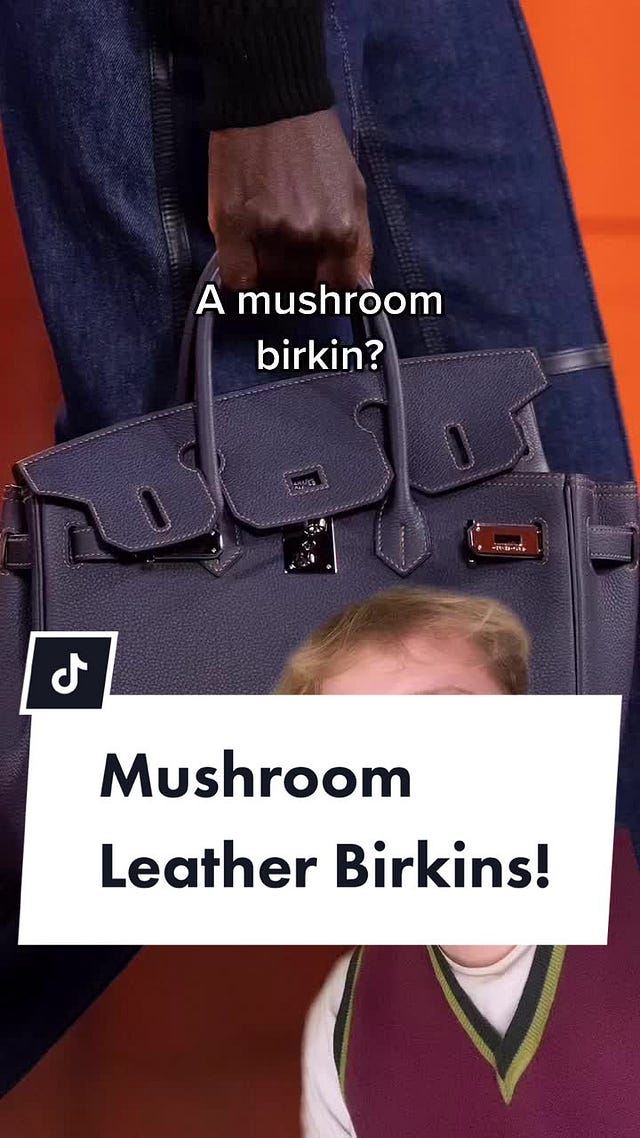Keeping up with the creator economy
As digital media competes with the fandomisation of news on social, it can't be fixed with old ways of thinking
It’s been a sad and sticky decade for the media industry, as we all well know. We’ve watched the golden era of blogs come and go, the glory days of media sites like Refinery29 and VICE, the scramble for income as traditional mags digitise themselves, the inevitable onslaught of paywalls from even the most reluctant of news outlets. It’s not necessarily good news for traditional media, but there is some light on the horizon for journalism itself. A heavenly marriage of social media sites and creator platforms like Patreon and Substack have birthed a new cohort of journalists and creators, with ever-engaged audiences. The media, it seems, is still standing, albeit in a new guise.
Today, the inimitable Tori West, founder of BRICKS magazine, gives us her insight into the shifting worlds of publishing and content creation, and what media companies can do to survive in this new status quo.
It's hard not to worry about the digital publishing industry collapsing around us, with layoffs and at every turn and Condé Nast workers chanting ‘Anna has Prada, we have nada’ outside her home during strike action. Are we in a media crisis? Or are we paving the way for a new era in journalism?
Just last month, after declaring bankruptcy in 2023, it was reported that VICE Media plans to cut hundreds of jobs and stop publishing its website. The media company, renowned for its toxic boys club culture, was previously valued at $5.7 billion and dominated the millennial media era. In perhaps its final clutch for survival, the company announced they were preparing to gear towards the ever-growing content creator economy, aiming to solely distribute news on social media platforms.
The current social creator economy is worth $250 billion, and expected to nearly double to $480 billion by 2027. But truth be told, I fear VICE is already a little too late. Traditional outlets are already struggling to keep up with independent content creators. It's like watching someone trying to catch a flight when they've missed the boarding slot. The media landscape is changing so rapidly that larger companies are struggling to keep up, but more worryingly they’ve begun to disregard the voices of their journalists that made them so successful in the first place.
When I worked at i-D as their social editor in 2016 – yes, a job like that existed before the era of Reels and TikTok – my boss wanted my personal social media to be branded as i-D. I actually refused, as, let's be honest, it wasn't my business. I wasn't even allowed a company phone, so if I wanted to chat shit about fashion on main, I was absolutely going to do that. I was on an awful salary and worried that, if I was too heavily branded to my current role, where would that leave me when they, inevitably, fired me over budget restrictions?
There's something odd about a considerably large fashion corporation expecting your underpaid staff to be your entire company's identity, while faceless company leaders reap the rewards of privacy and plush payouts. You'd hardly expect Tesco to push its shop floor workers to brand their personal social media as pro-Tesco (I did ask my sister who works there, just to make sure, and can confirm they don't). So why do fashion companies that a) don’t look after their staff and b) pay equally as shit as Tesco expect you to do it? The most valuable realisation of my experience working at i-D was that I began to recognise the growing power of your personal brand when it came to making content.
Fast forward to 2024, and personality is king. Fashion TikTokers such as Fashion Boy (232k), I Deserve Couture (111k), and Bernard Garby (426k) are single-handedly overthrowing media outlets based on engagement and following alone. They don’t even have websites. TikTok's most significant news account isn't VICE, The BBC or Sky News; it's one guy, TikToker Dylan Page, who boasts 10.6m followers. Some fashion IG accounts are fully branded as media outlets, such as Up Next Designer (495k), but the platform is solely run by one content creator. I suppose from an advertiser perspective, it's more cost-effective for an advertiser to pay one creator, who are now being considered as media companies in their own right, rather than an outlet with considerable fees to keep their office and staff afloat.
When I got fired at i-D, just four months after I first started (see, I told you that would happen), I decided to focus on my online presence and build my own audience to eventually start my own media company. I took up a part-time cleaner role, alongside making content about the difficulties of breaking into the creative industry as a working-class person. It led me to set up BRICKS Magazine as a media company in 2019 with the audience that I’d built already listening to my storytelling. Although we're in a precarious economy, having had to survive COVID and the cost of living crisis, our audience is growing along with our finances simply because I'm not a faceless founder. I worked hard for people to get to know me online so that I could hopefully involve them in other projects in the future. I suppose it’s how early fashion bloggers tapped into their WordPress community to shift over to Instagram and eventually TikTok.
In our early days of publishing, we didn't have stats or huge clients, but we did have a community. So instead of solely reporting to our audience, we involved them, casting them in our issues, amplifying their voices and funding their ideas, and they grew with us. I strongly believe in building a magazine that not only your audience can read, but can see themselves in and know how to be a part of it. Quite the contrary to traditional fashion media, which has always thrived on being exclusionary. This is what successfully led us to start an audience-funded business model. Since launching our alternative education member-only channel, 'The Learner Platform', in 2021, we've become the fastest-growing account for paid memberships on our hosting site, Steady HQ.
Other digital media outlets have paywalled their content or turned to exclusive members-only schemes in order to survive, but the problem is that these publications, which have spent decades pleasing their advertiser profits over their audience, will now struggle to convert them into paying members: many readers have already left, due to the constant churn of mundane branded content pushed down our throats.
Of course, we can't ignore the fact that some magazines, like Vogue, are thriving. Still, while industry figureheads such as Anna Wintour are incredibly visible, I hardly imagine them suddenly trying to break the fourth wall of publishing and being as accessible and approachable to their audience as I or other content creators are. But that's the true key to retaining your audience. As an editor, I’ve spent years cultivating, embedding myself and engaging with our audience in rooms that mainstream publications are now scrambling to discover and make profitable. I can’t help but wonder how long these publications can maintain value if we have no personal relationship or relatability with their company heads as they do with content creators. Perhaps the key to surviving this new shift for publications is to break the fourth wall and become more accessible. In the cost of living crisis, we don’t need elite figureheads, but leaders who foster their community, those that cultivate their journalists and audience as much as their advertisers.
When creatives come into our office, I usually ask what they’re reading at the moment, or where they get their news and they’ll usually answer; 1 Granary, Broccoli magazine, us at BRICKS or list off some of their favourite Substackers or TikTokers. It will be interesting to see what it would take for mainstream media to get firmly back onto their saved tabs and digital bookmarks. But in the meantime, a little reliability to maintain your audience (and writers for that matter) might prevent further damage. We’re not waving goodbye to traditional media just yet, but there’s no denying that, in these uncertain times, audiences are shifting their focus to publications and creators that put people and genuine storytelling over their profit margins. Those who inevitably won’t shift, will be left behind.
Add to all of this TikTok’s potential ban, and audiences ever-hungry for new truths that break through the noise, the race to create cut-through media has never been more on. With influencers flocking to Substack, Youtubers becoming TV personalities and newsletters like Perfectly Imperfect launching their own media sites, yesterday’s rule book no longer stands. Again, we can’t help but be reminded of the entrepreneurial media climate of the early ‘10s (12 year trend cycle, anyone?).
Our advice? Heed Tori’s warning: investing in audience relations is key. But how do you go about that? Honestly, anything goes. Be creative, and use the infinite tools now at our fingertips. Whoever innovates, wins?
Words: Tori West
Editor: Letty Cole











Fab piece ☠️